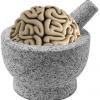I take phenibut about 3 times a week (have been for over a year) and have never had any issues with addiction/dependence. I use phenibut, however, not recreationally but for severe nerve pain from Lyme's disease. I also have a prescription for baclofen that I take a few times per week on the days I don't take Phenibut. I haven't had any issues with cross addiction yet, but theoretically, if I take baclofen on the days I do not take phenibut, would it be almost just like taking it everyday and become addicted to GABA-B meds in general? I also take Valium staggered throughout the week (every couple days). In addition, I take 600 mg Lyrica daily. I know its a lot of GABAergic meds, but my nerve pain is out of this world.

Phenibut and Baclofen cross addictive?
#1
Posted 29 June 2016 - 06:56 PM
#2
Posted 30 June 2016 - 11:53 PM
Everyone is different, however I do know baclofen removes any phenibut withdrawals for me. Have you tried abstaining from both for a period of more than a week? Or is that possible with your nerve pain?
Frankly, with your nerve pain, as long as you don't find yourself developing an increasing tolerance, I wouldn't be too concerned about addiction, if I were you. Sounds like what you are taking is improving your life and you are not chasing a "high."
#3
Posted 01 July 2016 - 09:23 PM
Have you tried abstaining from both for a period of more than a week?
Junk Master,
Yes, I do take breaks from baclofen, phenibut, and valium sometimes as a wash out period and to test and make sure I am not addicted to anything. After about 3 days, however, the pain gets so bad that my thoughts turn to suicide, so I am driven back to taking one of them. I even took Phenibut 5 days straight (the longest in a row I have ever taken it) and I'm currently on my 5th day without it (even though I am on Valium currently) and I have no Phenibut withdrawal effects. I did have some anxiety the day after stopping, but nothing some baclofen can't cure.
In addition to these meds, I am taking Suboxone, Amitriptyline, Chlorzoxazone, Guanfacine, and Metoprolol (for autonomic issues). Along with Lymes I have POTS, polyneuropathy, occipital neuralgia, and much more. If it weren't for all these meds, I would have already committed suicide. The pain I'm in is unbearable, but I still have hope that one day I may be cured. My ONLY issue is that I don't want to do any long term brain damage. I was quite highly intelligent before I took the meds, but they take a toll on my long term memory. I know most of it is only temporary, but I'd hate to be doing any long term damage. I guess right now the most important thing is to keep me comfortable to prevent the suicidal thoughts. What good is a smart brain if I'm dead?
#4
Posted 02 July 2016 - 03:54 AM
The two are cross addictive. both have affinity for the GABA-B receptor. the only difference between them is a chlorine atom attached to the aromatic ring of baclofen, compared to the lack thereof on the aromatic ring of phenibut.
#5
Posted 10 July 2016 - 11:05 PM
Gabapentin (common brand name Neurontin) - Of course, this is the prototype of this class of compounds, that was first identified as having an inhibitory effect on a2o-subunit-containing Voltage-Dependent Ca+ channel neuro-transmission in certain neurons in the brain. This inhibitory action on Voltage-Gated Calcium Channels calms the action of certain neuronal channels, and although Gabapentin has no direct binding affinity for GABA -A or GABA -B Receptors directly, in some ways it can be characterizes as a GABA modulator and/or GABA-productionn catalyst. Chemically, Gabapentin is the neurotransmitter GABA (Gamma-Aminobutyric Acid) with the addition of a cyclic cyclohexyl ring to the GABA backbone. Pharmacologically, this appears to nullify any affinity for either the ionotropic GABA -A Receptors or the metabotropic GABA -B Receptors. Instead, it possesses a novel mechanism-of-action that defines the gabapentinoid class of compounds - that is that it acts selectively as an inhibitor of a2o-subunit-containing Voltage-Gated Ca+ Channels in various types of neurons throughout various brain structures. (As well as within a2o Ca+ channels within nerve fibers in the spinal cord and Peripheral-Nervous-System, as well). It is this action that makes Gabapentin suitable for the treatment of certain types of neuropathic pain disorders.
Although in some circles, Gabapentin is used for the treatment of some anxiety disorders, its only real prevalent use in psychiatry (in my personal experience, using it alongside psychiatrists) is its use off-label as a mood-stabilizer (similar to the way that Lithium is used) even though its precise mechanism-of-action is distinct from that of traditional mood-stabilizing drugs. The action by which Gabapentin exerts its mild mood-stabilizing effects is likely via the same mechanism that it effects anxiety disorders - in that Gabapentin modulates the action of glutamate decarboxylase and aminotransferase (two enzymes that are responsible for the biosynthesis of GABA).
Pregabalin (common brand name Lyrica) - A close structural analogue of Gabapentin, and another structural derivative of the endogenous neurotransmitter GABA (Gamma-Aminobutyric Acid). Chemically, Pregabalin is also composed of the chemical backbone of GABA, with the addition of an isobutyl group (in place of the cyclohexyl group on the Gabapentin molecule), making it roughly 2.5x as potent at a2o-subunit Voltage-Gated Calcium Channel sites than Gabapentin itself. Because of it's stronger inhibitory action at these sites, as well as its more prominent action on increasing GABA biosynthesis (via glutamate decarboxylase and aminotransferase) as well as increasing the synaptic density of the GABA transporter molecules and increasing the functional rate of GABA transport from synaptic space to pre-synaptic neurons (and vise-versa), it has been declared as a drug of potential abuse and federally scheduled as a Schedule V Drug by the US Drug Enforcement Administration. Because of its more pronounced action on GABA biosythesis, GABA reuptake (via affecting the GABA transporter), and its increased inhibitory action on a2o-subunit Ca+ Channels, it has been proven to be considerably more effective than Gabapentin in several clinical trials evaluating its effectiveness for the treatment of anxiety disorders such as Generalized Anxiety Disorder. (Although this use is generally accompanied by the use of a Tricyclic Antidepressant or Selective-Serotonin Reuptake Inhibitor (SSRI)). A recent clinical evaluation by Bandelow et al. (2007) comparing the long-term effectiveness of Pregabalin against traditional anxiolytic agents such as various benzodiazepines and drugs such as venlafaxine, concluded that Pregabalin may be as effective at treating Generalized Anxiety Disorder as these drugs are, while remaining more effective long-term compared to several benzodiazepine drugs, due to the rapid development of tolerance to benzodiazepine drugs in many subjects. Now, these findings are encouraging at first glance, but have yet to be replicated (or displayed on a large-scale study population), and in my professional opinion - although potentially beneficial for the treatment of Generalized Anxiety Disorder with the co-administration of a serotonergic agent such as a Tricyclic Antidepressant or Selective-Serotonin Reuptake Inhibitor (SSRI), I do not feel that Pregabalin provides enough GABAergic activity to truly be effective at treating severe anxiety disorders, or psychophysical anxiety disorders, such as Panic Attack Disorder.
Phenibut - Although originally believed to function solely as a selective and competitive metabotropic GABA -B Receptor agonist, recent studies have revealed that in addition to Phenibut's affinity for GABA -B Receptors, it too, like Gabapentin and Pregabalin, acts as a selective a2o-subunit Voltage-Gated-Calcium Channel site inhibitor. Now, as stated in this thread, I do feel that Phenibut is over-used by many in the nootropic/"research chemical" sector online, but I do absolutely feel that it has therapeutic value as an anxiolytic drug, and I have even developed structural relatives and novel compounds based upon its structure for the treatment of anxiety disorders. Phenibut exerts its anxioltyic action via three primary mechanisms-of-action - Firstly, because of its selective and competitive agonism of metabotropic GABA -B Receptors - Second, because of its gabapentinoid inhibitory action at a2o-subunit-containing Voltage-Gated Ca+ Channel neuro-transmission - And third, because of its action as a TAAR1 (Trace Amine-Associated Receptor 1) antagonist, which effectively antagonizes the endogenous substance B-phenethylamine. (Which is the prototype backbone structure for drugs such as amphetamine, some substituted cathinones, and some other substituted phenthylamines, which can induce anxiety). Chemically, Phenibut is also a derivative of GABA (Gamma-Aminobutyric Acid) and consists of the GABA backbone, with the addition of a cyclic phenyl ring, which allows the GABA molecule to be lipophillic (fat-soluble) enough to permeate the Blood-Brain-Barrier - and also makes it competitively selective for the GABA -B Receptor over the GABA -A subtype, also providing the molecule with a binding affinity for the TAAR1 Receptor. (Which GABA itself does not).
Gabapentin, Pregabalin, and Phenibut are all close structural relatives, and are all chemical derivatives of GABA (Gama-Aminobutyric Acid), the differences being the addition of a cyclohexyl group on the GABA chain in the case of Gabapentin, the substitution of that cyclohexyl group for an isobutyl group in the case of Pregabalin, and the substitution of that isobutyl group with a cyclic phenyl ring in the case of Phenibut.
Baclofen - Despite having some measurable affinity for the same a2o-subunit Voltage-Gated Calcium Channel sites that the other gabapentinoid compounds listed here do, the actual affinity of Baclofen for these sites is so minute, that I consider it medically insignificant in regards to Baclofen's overall pharmacological mechanism-of-action. Chemically, Baclofen is the exact same molecule as Phenibut (the GABA molecule with the addition of the cyclic phenyl ring) - with the only difference being the addition of a single chloride atom on the para position of the phenyl ring of Phenibut. This very slight chemical difference has a surprisingly dramatic effect on Baclofen's overall pharmacological mechanism-of-action. The addition of the chloride atom on Baclofen's phenyl ring dramatically shields it from the extensive first-pass metabolism in the stomach the Phenibut is subject to. (Typical doses of Phenibut are around 1000mg, whereas typical Baclofen doses are around 20mg). The addition of the chloride atom on Baclofen's phenyl ring does not affect its selectivity for the metabotropic GABA -B Receptor, as Baclofen retains similar binding affinity and action as an agonist at GABA -B Receptor subtypes. However, the addition of the chloride atom on Baclofen's phenyl ring does appear to significantly diminish its affinity for the a2o-subunit Voltage-Gated Ca+ Channel sites that the other gabapentinoid compounds mentioned here possess. Additionally, the addition of the chloride atom on the phenyl ring of Baclofen appears to block all affinity for the TAAR1 (Trace Amine-Associated Receptor 1), for which Phenibut displays noteworthy affinity for, and for which Baclofen does not. So, despite having some measurable affinity for a20-subunit Voltage-Gated Calcium Channel sites like the other gabapentinoids mentioned above, its actual action at these sites is so minute that Baclofen's only real medically noteworthy mechanism-of-action is as a highly selective and competitive metabotropic GABA -B Receptor agonist.
If you are using Baclofen, Phenibut, and Pregabalin together and are still not getting relief from neuropathic pain, then you are probably exhausting the therapeutic potential of the gabapnetinoid class of drugs, and may need to use a milf-moderate strength, centrally-acting opioid painkiller, such as Tramadol or hydrocodone. In all honesty, the Phenibut is probably a better choice than the Baclofen, since the slight addition of that single chloride atom on the Baclofen molecule nullifies almost all of Baclofen's affinity for and action at, Voltage-Gated Ca+ channels that Phenibut (lacking this halo0gen group) still retains. Don't get me wrong, the Baclofen may still help some, by exerting it's skeletal smooth-muscle relaxant effect as a consequence of metabotropic GABA -B Receptor binding. However, the GABA -A agonist skeletal smooth-muscle-relaxant drug that just recently became a scheduled drug in many countries (namely, Carisoprodol (or name brand "Soma" in several countries)) is a much better choice for much people, and exerts much more of a notable effect compared to Baclofen. However, one must remember, that like many other GABA -A Receptor agonists (particularly some of the older drug classes) these drugs often do impair overall cognition and can be habit-forming. Your physician will have to weigh the side effects of taking a centrally-acting opioid painkiller or a GABA agonist muscle relaxant drug alongside the Pregabalin that you are already taking.
-John Gona
Oracle Laboratories
NeuroPsych Institute
#6
Posted 12 July 2016 - 02:35 PM
I’m not entirely sure what you’re asking. Are you asking if cross-tolerance develops to the effects of Phenibut and Baclofen, or if they substitute for each other during withdrawal syndrome? The answer is yes for both, to some extent..
Gabapentin (common brand name Neurontin) - Of course, this is the prototype of this class of compounds, that was first identified as having an inhibitory effect on a2o-subunit-containing Voltage-Dependent Ca+ channel neuro-transmission in certain neurons in the brain. This inhibitory action on Voltage-Gated Calcium Channels calms the action of certain neuronal channels, and although Gabapentin has no direct binding affinity for GABA -A or GABA -B Receptors directly, in some ways it can be characterizes as a GABA modulator and/or GABA-productionn catalyst. Chemically, Gabapentin is the neurotransmitter GABA (Gamma-Aminobutyric Acid) with the addition of a cyclic cyclohexyl ring to the GABA backbone. Pharmacologically, this appears to nullify any affinity for either the ionotropic GABA -A Receptors or the metabotropic GABA -B Receptors. Instead, it possesses a novel mechanism-of-action that defines the gabapentinoid class of compounds - that is that it acts selectively as an inhibitor of a2o-subunit-containing Voltage-Gated Ca+ Channels in various types of neurons throughout various brain structures. (As well as within a2o Ca+ channels within nerve fibers in the spinal cord and Peripheral-Nervous-System, as well). It is this action that makes Gabapentin suitable for the treatment of certain types of neuropathic pain disorders.
Although in some circles, Gabapentin is used for the treatment of some anxiety disorders, its only real prevalent use in psychiatry (in my personal experience, using it alongside psychiatrists) is its use off-label as a mood-stabilizer (similar to the way that Lithium is used) even though its precise mechanism-of-action is distinct from that of traditional mood-stabilizing drugs. The action by which Gabapentin exerts its mild mood-stabilizing effects is likely via the same mechanism that it effects anxiety disorders - in that Gabapentin modulates the action of glutamate decarboxylase and aminotransferase (two enzymes that are responsible for the biosynthesis of GABA).
Pregabalin (common brand name Lyrica) - A close structural analogue of Gabapentin, and another structural derivative of the endogenous neurotransmitter GABA (Gamma-Aminobutyric Acid). Chemically, Pregabalin is also composed of the chemical backbone of GABA, with the addition of an isobutyl group (in place of the cyclohexyl group on the Gabapentin molecule), making it roughly 2.5x as potent at a2o-subunit Voltage-Gated Calcium Channel sites than Gabapentin itself. Because of it's stronger inhibitory action at these sites, as well as its more prominent action on increasing GABA biosynthesis (via glutamate decarboxylase and aminotransferase) as well as increasing the synaptic density of the GABA transporter molecules and increasing the functional rate of GABA transport from synaptic space to pre-synaptic neurons (and vise-versa), it has been declared as a drug of potential abuse and federally scheduled as a Schedule V Drug by the US Drug Enforcement Administration. Because of its more pronounced action on GABA biosythesis, GABA reuptake (via affecting the GABA transporter), and its increased inhibitory action on a2o-subunit Ca+ Channels, it has been proven to be considerably more effective than Gabapentin in several clinical trials evaluating its effectiveness for the treatment of anxiety disorders such as Generalized Anxiety Disorder. (Although this use is generally accompanied by the use of a Tricyclic Antidepressant or Selective-Serotonin Reuptake Inhibitor (SSRI)). A recent clinical evaluation by Bandelow et al. (2007) comparing the long-term effectiveness of Pregabalin against traditional anxiolytic agents such as various benzodiazepines and drugs such as venlafaxine, concluded that Pregabalin may be as effective at treating Generalized Anxiety Disorder as these drugs are, while remaining more effective long-term compared to several benzodiazepine drugs, due to the rapid development of tolerance to benzodiazepine drugs in many subjects. Now, these findings are encouraging at first glance, but have yet to be replicated (or displayed on a large-scale study population), and in my professional opinion - although potentially beneficial for the treatment of Generalized Anxiety Disorder with the co-administration of a serotonergic agent such as a Tricyclic Antidepressant or Selective-Serotonin Reuptake Inhibitor (SSRI), I do not feel that Pregabalin provides enough GABAergic activity to truly be effective at treating severe anxiety disorders, or psychophysical anxiety disorders, such as Panic Attack Disorder.
Phenibut - Although originally believed to function solely as a selective and competitive metabotropic GABA -B Receptor agonist, recent studies have revealed that in addition to Phenibut's affinity for GABA -B Receptors, it too, like Gabapentin and Pregabalin, acts as a selective a2o-subunit Voltage-Gated-Calcium Channel site inhibitor. Now, as stated in this thread, I do feel that Phenibut is over-used by many in the nootropic/"research chemical" sector online, but I do absolutely feel that it has therapeutic value as an anxiolytic drug, and I have even developed structural relatives and novel compounds based upon its structure for the treatment of anxiety disorders. Phenibut exerts its anxioltyic action via three primary mechanisms-of-action - Firstly, because of its selective and competitive agonism of metabotropic GABA -B Receptors - Second, because of its gabapentinoid inhibitory action at a2o-subunit-containing Voltage-Gated Ca+ Channel neuro-transmission - And third, because of its action as a TAAR1 (Trace Amine-Associated Receptor 1) antagonist, which effectively antagonizes the endogenous substance B-phenethylamine. (Which is the prototype backbone structure for drugs such as amphetamine, some substituted cathinones, and some other substituted phenthylamines, which can induce anxiety). Chemically, Phenibut is also a derivative of GABA (Gamma-Aminobutyric Acid) and consists of the GABA backbone, with the addition of a cyclic phenyl ring, which allows the GABA molecule to be lipophillic (fat-soluble) enough to permeate the Blood-Brain-Barrier - and also makes it competitively selective for the GABA -B Receptor over the GABA -A subtype, also providing the molecule with a binding affinity for the TAAR1 Receptor. (Which GABA itself does not).
Gabapentin, Pregabalin, and Phenibut are all close structural relatives, and are all chemical derivatives of GABA (Gama-Aminobutyric Acid), the differences being the addition of a cyclohexyl group on the GABA chain in the case of Gabapentin, the substitution of that cyclohexyl group for an isobutyl group in the case of Pregabalin, and the substitution of that isobutyl group with a cyclic phenyl ring in the case of Phenibut.
Baclofen - Despite having some measurable affinity for the same a2o-subunit Voltage-Gated Calcium Channel sites that the other gabapentinoid compounds listed here do, the actual affinity of Baclofen for these sites is so minute, that I consider it medically insignificant in regards to Baclofen's overall pharmacological mechanism-of-action. Chemically, Baclofen is the exact same molecule as Phenibut (the GABA molecule with the addition of the cyclic phenyl ring) - with the only difference being the addition of a single chloride atom on the para position of the phenyl ring of Phenibut. This very slight chemical difference has a surprisingly dramatic effect on Baclofen's overall pharmacological mechanism-of-action. The addition of the chloride atom on Baclofen's phenyl ring dramatically shields it from the extensive first-pass metabolism in the stomach the Phenibut is subject to. (Typical doses of Phenibut are around 1000mg, whereas typical Baclofen doses are around 20mg). The addition of the chloride atom on Baclofen's phenyl ring does not affect its selectivity for the metabotropic GABA -B Receptor, as Baclofen retains similar binding affinity and action as an agonist at GABA -B Receptor subtypes. However, the addition of the chloride atom on Baclofen's phenyl ring does appear to significantly diminish its affinity for the a2o-subunit Voltage-Gated Ca+ Channel sites that the other gabapentinoid compounds mentioned here possess. Additionally, the addition of the chloride atom on the phenyl ring of Baclofen appears to block all affinity for the TAAR1 (Trace Amine-Associated Receptor 1), for which Phenibut displays noteworthy affinity for, and for which Baclofen does not. So, despite having some measurable affinity for a20-subunit Voltage-Gated Calcium Channel sites like the other gabapentinoids mentioned above, its actual action at these sites is so minute that Baclofen's only real medically noteworthy mechanism-of-action is as a highly selective and competitive metabotropic GABA -B Receptor agonist.
Psychopharmacologist
Psychotropic Treatment Specialist
Edited by Oracle Laboratories, 12 July 2016 - 02:42 PM.
#7
Posted 12 July 2016 - 07:30 PM
I am not sure exactly what you are asking. Do you mean are Phenibut and Baclofen's pharmacological mechanism(s)-of-action cross-tolerant with each other, or are you asking if one will substitute for the other and suppress the withdrawal syndrome of the other? The answer is yes to both, notably due to two distinct mechanism(s)-of-ation shared between both compounds.First, the primary mechanism-of-action that causes withdrawal; syndrome upon abrupt cessation are Phenibut and Baclofen's affinity for and agonist action at, metabotropic GABA -B Receptors. The second primary mechanism-of-action (on the one that you are probably seeking), is that both compounds exert an inhibitory action as "gabapentinoids" at a2o-subunit-containing Voltage-Gated Ca+ channel sites throughout the Central-Nervous-System and Peripheral-Nervous-System. (Although Baclofen to a MUCH lesser extent). Of course, the same is also true of Pregabalin (Lyrica) in its a2o-subunit-containing Voltage-Gated Calcium Channel site inhibitor properties, and although Pregablin does not possess any direct affinity for GABA Receptors, it can be categorized as a GABA-production catalyst.All of the typical Gabapentinoid compounds consist of the GABA carbon backbone, with various additions of functional groups that either make the molecule lipophillic enough to permeate the Blood-Brain-Barrier, or alter the compound's overall binding affinity for a specific target site within a given neuronal system in the brain. GABA does not cross the Blood-Brain-Barrier on it's own, so in the case of Phenibut and Baclofen, it is the addition of the cyclic phenyl ring that carries the compound across the Blood-Brain-Barrier, and is also the group that makes the molecule(s) highly selective for the GABA -B Receptor subtype (over GABA -A subtypes). Also, echoing PeopleProgrammer's comments, the only variation between Phenibut and Baclofen is the additional of a single chloride atom on the para position on the cyclic, aromatic phenyl ring of Baclofen. This tiny chemical modification alters of pharmacology and pharmacokinetics of Baclofen compared to Phenibut in two primary ways: *one being that the addition of this single chloride atom significantly protects the Baclofen molecule from the extensive first-pass metabolism in the gut and the gastrointestinal tract that Phenibut is subjected to (almost completely being destroyed via first-pass metabolism), making average doses of Phenibut 1000mg to 1500mg, and average doses of Baclofen around 20mg. Secondly, the addition of that simple halogen group (the single chloride atom on Baclofen) seems to diminish almost all of Baclofen's selectivity for Voltage-Gated Ca+ channels, making Baclofen a pure, selective, and competitive GABA -B Receptor agonist, while Phenibut displays both GABA -B Receptor affinity as well as an inhibitory action at a2o-subunit-containing Voltage-Gated calcium channels which helps to combat neuropathic pain like other classical examples of gabapentinoid compounds, including Pregabalin (Lyrica) and Gabapentin (Neurontin).Now, the two "classical" examples of the GABApentinoids Gabapentin (Neurontin) and Pregabalin (Lyrica) both act on a2o-subunit-containing Voltage-Gated calcium channels with an inhibitory action, which decreases the frequency that nerves along these channels fire, and also limit how long these channels stay open during neuronal firing - thereby decreasing neuropathic pain. Now, although Gabapentin and Pregabalin do not possess any GABA Receptor affinity themselves, they do affect the mechanisms of of glutamate decarboxylase and aminotransferase (two enzymes that are responsible for the biosynthesis of GABA from glutamate). They also affect the neuronal density of the GABA transporter molecules and increase the functional rate of GABA transport from the synaptic space to pre-synaptic neurons (and vise-versa), thereby aplifying the action of GABA to some degree.There was a thread not long ago regarding the interchangeability and substitution of Phenibut and Baclofen for anxiety disorders, where a poster asked me about general gabapentinoid pharmacology. The following information is a quote from that post:
Gabapentin (common brand name Neurontin) - Of course, this is the prototype of this class of compounds, that was first identified as having an inhibitory effect on a2o-subunit-containing Voltage-Dependent Ca+ channel neuro-transmission in certain neurons in the brain. This inhibitory action on Voltage-Gated Calcium Channels calms the action of certain neuronal channels, and although Gabapentin has no direct binding affinity for GABA -A or GABA -B Receptors directly, in some ways it can be characterizes as a GABA modulator and/or GABA-productionn catalyst. Chemically, Gabapentin is the neurotransmitter GABA (Gamma-Aminobutyric Acid) with the addition of a cyclic cyclohexyl ring to the GABA backbone. Pharmacologically, this appears to nullify any affinity for either the ionotropic GABA -A Receptors or the metabotropic GABA -B Receptors. Instead, it possesses a novel mechanism-of-action that defines the gabapentinoid class of compounds - that is that it acts selectively as an inhibitor of a2o-subunit-containing Voltage-Gated Ca+ Channels in various types of neurons throughout various brain structures. (As well as within a2o Ca+ channels within nerve fibers in the spinal cord and Peripheral-Nervous-System, as well). It is this action that makes Gabapentin suitable for the treatment of certain types of neuropathic pain disorders.
Although in some circles, Gabapentin is used for the treatment of some anxiety disorders, its only real prevalent use in psychiatry (in my personal experience, using it alongside psychiatrists) is its use off-label as a mood-stabilizer (similar to the way that Lithium is used) even though its precise mechanism-of-action is distinct from that of traditional mood-stabilizing drugs. The action by which Gabapentin exerts its mild mood-stabilizing effects is likely via the same mechanism that it effects anxiety disorders - in that Gabapentin modulates the action of glutamate decarboxylase and aminotransferase (two enzymes that are responsible for the biosynthesis of GABA).
Pregabalin (common brand name Lyrica) - A close structural analogue of Gabapentin, and another structural derivative of the endogenous neurotransmitter GABA (Gamma-Aminobutyric Acid). Chemically, Pregabalin is also composed of the chemical backbone of GABA, with the addition of an isobutyl group (in place of the cyclohexyl group on the Gabapentin molecule), making it roughly 2.5x as potent at a2o-subunit Voltage-Gated Calcium Channel sites than Gabapentin itself. Because of it's stronger inhibitory action at these sites, as well as its more prominent action on increasing GABA biosynthesis (via glutamate decarboxylase and aminotransferase) as well as increasing the synaptic density of the GABA transporter molecules and increasing the functional rate of GABA transport from synaptic space to pre-synaptic neurons (and vise-versa), it has been declared as a drug of potential abuse and federally scheduled as a Schedule V Drug by the US Drug Enforcement Administration. Because of its more pronounced action on GABA biosythesis, GABA reuptake (via affecting the GABA transporter), and its increased inhibitory action on a2o-subunit Ca+ Channels, it has been proven to be considerably more effective than Gabapentin in several clinical trials evaluating its effectiveness for the treatment of anxiety disorders such as Generalized Anxiety Disorder. (Although this use is generally accompanied by the use of a Tricyclic Antidepressant or Selective-Serotonin Reuptake Inhibitor (SSRI)). A recent clinical evaluation by Bandelow et al. (2007) comparing the long-term effectiveness of Pregabalin against traditional anxiolytic agents such as various benzodiazepines and drugs such as venlafaxine, concluded that Pregabalin may be as effective at treating Generalized Anxiety Disorder as these drugs are, while remaining more effective long-term compared to several benzodiazepine drugs, due to the rapid development of tolerance to benzodiazepine drugs in many subjects. Now, these findings are encouraging at first glance, but have yet to be replicated (or displayed on a large-scale study population), and in my professional opinion - although potentially beneficial for the treatment of Generalized Anxiety Disorder with the co-administration of a serotonergic agent such as a Tricyclic Antidepressant or Selective-Serotonin Reuptake Inhibitor (SSRI), I do not feel that Pregabalin provides enough GABAergic activity to truly be effective at treating severe anxiety disorders, or psychophysical anxiety disorders, such as Panic Attack Disorder.
Phenibut - Although originally believed to function solely as a selective and competitive metabotropic GABA -B Receptor agonist, recent studies have revealed that in addition to Phenibut's affinity for GABA -B Receptors, it too, like Gabapentin and Pregabalin, acts as a selective a2o-subunit Voltage-Gated-Calcium Channel site inhibitor. Now, as stated in this thread, I do feel that Phenibut is over-used by many in the nootropic/"research chemical" sector online, but I do absolutely feel that it has therapeutic value as an anxiolytic drug, and I have even developed structural relatives and novel compounds based upon its structure for the treatment of anxiety disorders. Phenibut exerts its anxioltyic action via three primary mechanisms-of-action - Firstly, because of its selective and competitive agonism of metabotropic GABA -B Receptors - Second, because of its gabapentinoid inhibitory action at a2o-subunit-containing Voltage-Gated Ca+ Channel neuro-transmission - And third, because of its action as a TAAR1 (Trace Amine-Associated Receptor 1) antagonist, which effectively antagonizes the endogenous substance B-phenethylamine. (Which is the prototype backbone structure for drugs such as amphetamine, some substituted cathinones, and some other substituted phenthylamines, which can induce anxiety). Chemically, Phenibut is also a derivative of GABA (Gamma-Aminobutyric Acid) and consists of the GABA backbone, with the addition of a cyclic phenyl ring, which allows the GABA molecule to be lipophillic (fat-soluble) enough to permeate the Blood-Brain-Barrier - and also makes it competitively selective for the GABA -B Receptor over the GABA -A subtype, also providing the molecule with a binding affinity for the TAAR1 Receptor. (Which GABA itself does not).
Gabapentin, Pregabalin, and Phenibut are all close structural relatives, and are all chemical derivatives of GABA (Gama-Aminobutyric Acid), the differences being the addition of a cyclohexyl group on the GABA chain in the case of Gabapentin, the substitution of that cyclohexyl group for an isobutyl group in the case of Pregabalin, and the substitution of that isobutyl group with a cyclic phenyl ring in the case of Phenibut.
Baclofen - Despite having some measurable affinity for the same a2o-subunit Voltage-Gated Calcium Channel sites that the other gabapentinoid compounds listed here do, the actual affinity of Baclofen for these sites is so minute, that I consider it medically insignificant in regards to Baclofen's overall pharmacological mechanism-of-action. Chemically, Baclofen is the exact same molecule as Phenibut (the GABA molecule with the addition of the cyclic phenyl ring) - with the only difference being the addition of a single chloride atom on the para position of the phenyl ring of Phenibut. This very slight chemical difference has a surprisingly dramatic effect on Baclofen's overall pharmacological mechanism-of-action. The addition of the chloride atom on Baclofen's phenyl ring dramatically shields it from the extensive first-pass metabolism in the stomach the Phenibut is subject to. (Typical doses of Phenibut are around 1000mg, whereas typical Baclofen doses are around 20mg). The addition of the chloride atom on Baclofen's phenyl ring does not affect its selectivity for the metabotropic GABA -B Receptor, as Baclofen retains similar binding affinity and action as an agonist at GABA -B Receptor subtypes. However, the addition of the chloride atom on Baclofen's phenyl ring does appear to significantly diminish its affinity for the a2o-subunit Voltage-Gated Ca+ Channel sites that the other gabapentinoid compounds mentioned here possess. Additionally, the addition of the chloride atom on the phenyl ring of Baclofen appears to block all affinity for the TAAR1 (Trace Amine-Associated Receptor 1), for which Phenibut displays noteworthy affinity for, and for which Baclofen does not. So, despite having some measurable affinity for a20-subunit Voltage-Gated Calcium Channel sites like the other gabapentinoids mentioned above, its actual action at these sites is so minute that Baclofen's only real medically noteworthy mechanism-of-action is as a highly selective and competitive metabotropic GABA -B Receptor agonist.
If you are using Baclofen, Phenibut, and Pregabalin together and are still not getting relief from neuropathic pain, then you are probably exhausting the therapeutic potential of the gabapnetinoid class of drugs, and may need to use a milf-moderate strength, centrally-acting opioid painkiller, such as Tramadol or hydrocodone. In all honesty, the Phenibut is probably a better choice than the Baclofen, since the slight addition of that single chloride atom on the Baclofen molecule nullifies almost all of Baclofen's affinity for and action at, Voltage-Gated Ca+ channels that Phenibut (lacking this halo0gen group) still retains. Don't get me wrong, the Baclofen may still help some, by exerting it's skeletal smooth-muscle relaxant effect as a consequence of metabotropic GABA -B Receptor binding. However, the GABA -A agonist skeletal smooth-muscle-relaxant drug that just recently became a scheduled drug in many countries (namely, Carisoprodol (or name brand "Soma" in several countries)) is a much better choice for much people, and exerts much more of a notable effect compared to Baclofen. However, one must remember, that like many other GABA -A Receptor agonists (particularly some of the older drug classes) these drugs often do impair overall cognition and can be habit-forming. Your physician will have to weigh the side effects of taking a centrally-acting opioid painkiller or a GABA agonist muscle relaxant drug alongside the Pregabalin that you are already taking.
-John Gona
Oracle Laboratories
NeuroPsych Institute
I appreciate your very informative, well written reply. Baclofen only helps minimally and the only reason I took it at all, on days I did not take phenibut, was to cycle them. However, now that I know they are cross addictive, I will most likely take Phenibut every day at 2 g for the next 6 months as it helps my pain and I need to finish college. I will deal with withdrawing when I get there.
I am already on an opiod - Suboxone. However, it is not working very well for the amount of pain I am in. I want to be on something stronger, methadone would probably be a good choice. The amount of pain I am in from Lyme's in unspeakable and unbearable - I would do almost anything to be out of it.
#8
Posted 17 July 2016 - 07:01 PM
My question is regarding the buildup of tolerance to Baclofen. I've heard in many places that while tolerance develops to its psychological relaxing effects, tolerance to its anti-spasmodic properties doesn't happen (or happens much slower). What might the reason/mechanism be for this? Does this apply to its muscle relaxation properties too?
Thanks in advance
#9
Posted 20 July 2016 - 06:57 PM
#10
Posted 20 July 2016 - 07:05 PM
Oops.. I completely missed that you're already taking Lyrica. Sorry. I re-read your additional post.
#11
Posted 20 July 2016 - 08:07 PM
Also tagged with one or more of these keywords: phenibut, baclofen, nerve pain, pain, chronic pain, lyme, herniated disc, nootropic
Science & Health →
Brain Health →
Neuromax + Cognizin® nootropic, neuroprotective, neurotrophic and neurostimulantStarted by Maurice , 19 Jun 2025 |
|

|
||
Science & Health →
Brain Health →
Mental Health →
FibromyalgiaStarted by mono , 27 May 2025 |
|

|
||
Science & Health →
Brain Health →
Nootropic Stacks →
Stack advice for dsa user to pass examStarted by Riky99 , 26 May 2025 |
|

|
||
Science & Health →
Brain Health →
Nootropics of the poker pros?Started by Galaxyshock , 10 May 2025 |
|

|
||
Science & Health →
Brain Health →
Nootropic Stacks →
how would you describe Cerebrolysin to a person unfamiliar to nootropics?Started by davidwood557 , 01 Oct 2024 |
|

|
1 user(s) are reading this topic
0 members, 1 guests, 0 anonymous users












































